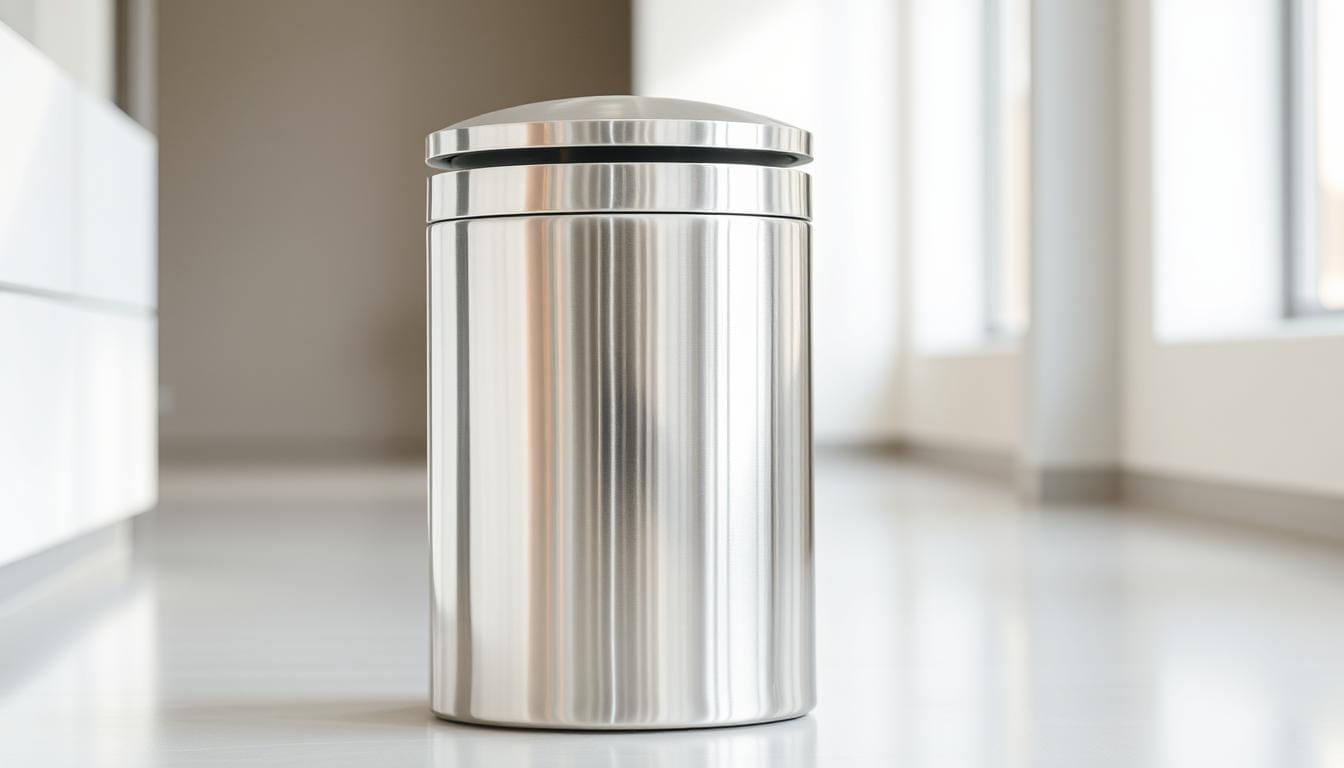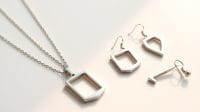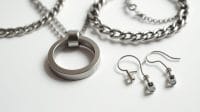Curious which bin design saves time, reduces odors, and still looks sharp in a busy kitchen?
Professionals and homeowners often choose a stainless steel trash can for durability and easy cleaning. This roundup maps sizes, finishes, and lid types so readers can match features to daily routines.
Retailers like Simplehuman and ULINE show how capacity, finish, and opening style change performance. Quiet-close lids, touchless sensors, and slim profiles serve families; open-top and step models suit high-traffic indoor spots.
Expect practical tips: how to read liters and footprint specs, pick compatible liners, and balance price versus longevity. The guide gives clear comparisons so buyers in the United States can choose reliable cans that handle daily waste with less hassle.
How to Choose the Right Stainless Steel Trash Can for Your Space
Match size and placement first. A 10L–18L model suits bathrooms and tiny rooms. Kitchens usually need 45L–60L to cut emptying trips for busy families.
Measure width and depth before you buy. Rectangular shapes work against walls; semi-round models slide into traffic areas. Slim profiles fit between appliances without blocking doors.
Pick a finish that lasts. Brushed surfaces hide scuffs, matte black adds contrast, and white blends with cabinets. All are common on top models and resist smudges better than painted plastic housings.
Choose the right lid. Step pedals are reliable during meal prep; touchless sensors add hygiene; open-top designs suit continuous, high-frequency use. Look for soft-close hinges and wide trash lid openings for bulky waste.
- Use removable inner buckets for quick rinses and bag changes.
- Prefer custom-fit liners and bag retainers to reduce overhang and tearing.
- Dual-compartment recyclers simplify sorting without extra appliances.
For model ideas and finish options, consider this black stainless steel trash can as a reference for matte black styling and sensor features: black stainless steel trash can.
Best stainless steel trash can picks: top categories and standout models
From heavy-use kitchen workhorses to slim under-counter units, these model picks clarify capacity, function, and price.
Kitchen workhorses: Rectangular pedal models fit most family kitchens. The Simplehuman 45L Rectangular Step starts near $150 (brushed); the 55L adds capacity for about $200. Both offer wide lids and reliable pedals for frequent use.
Slim and space-saving: Tight layouts benefit from the 45L Slim Step ($110–$120) or semi-round 45L/60L step models. Their narrow footprints tuck beside cabinets without blocking traffic.
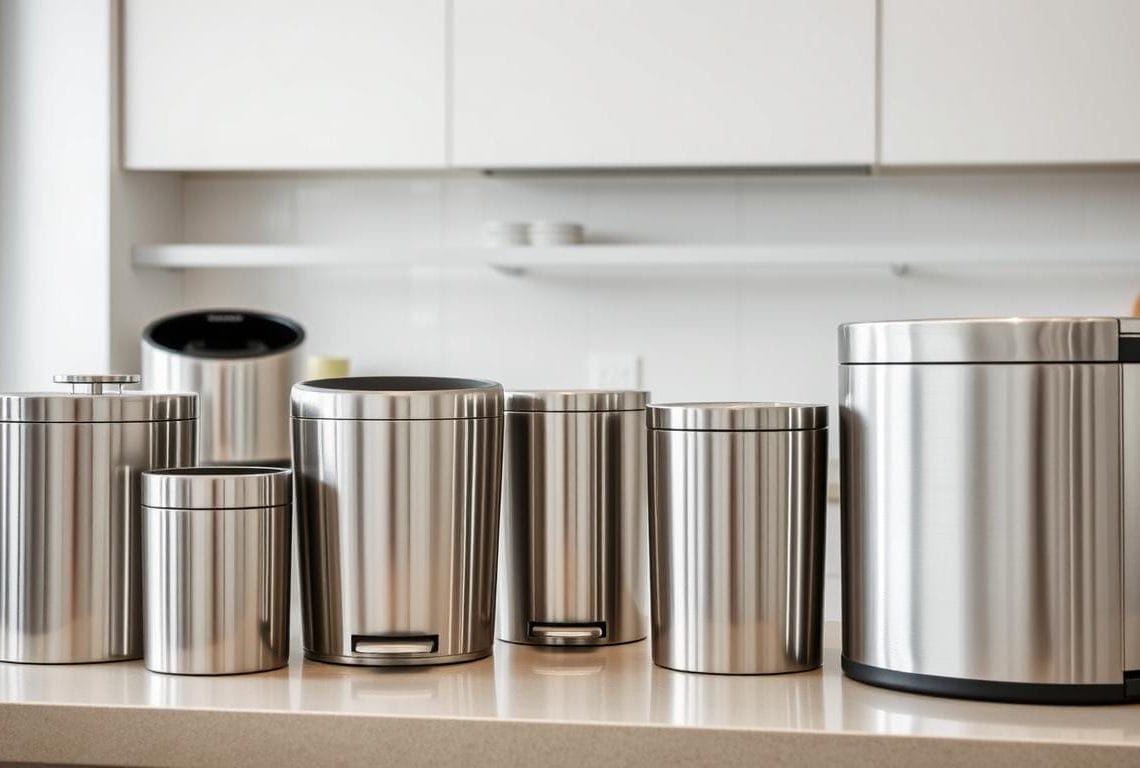
Touchless convenience: Sensor models include the 45L Semi-Round Sensor ($160–$170) and the 58L Sensor ($300–$325). These touchless units cut contact and reduce odors in busy kitchens.
Dual-compartment recyclers: The 40L Butterfly Step ($180) and the 58L Sensor Recycler ($300–$350) separate waste and recycling in one footprint—ideal when floor space is limited.
- Under-counter solutions: Pull-out 35L/30L units ($100) and a 10L in-cabinet option ($40) hide waste for a clean look.
- Commercial and facility lines: ULINE lists Open Top, Lobby, and Step-On models for offices and high-traffic areas.
- Where to shop: Compare Simplehuman pricing with selections from Trash Cans Unlimited to balance finish options and availability.
Match finishes: Brushed finishes hide marks; matte black and white complement modern appliance schemes. For a larger capacity reference, see the large stainless steel trash can.
Use-case matchups: kitchen, office, and small-room stainless solutions
Match features to daily use—capacity, lid style, and operation type determine whether a bin improves workflow or creates extra work.
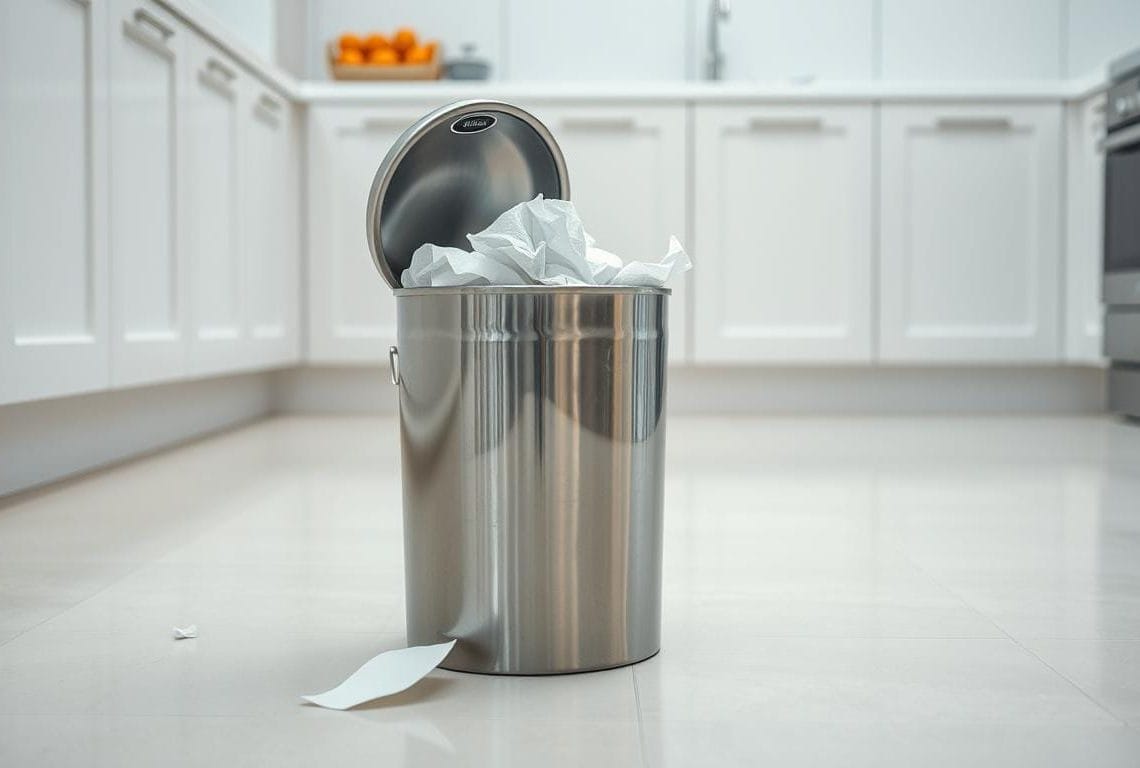
Family kitchens: pedal-driven 55L–60L models
For busy kitchens, a 55L–60L pedal model balances capacity and hygiene. Quiet-close lids cut noise during meal prep. A strong pedal keeps hands free and counters cleaner.
Rectangular 55L models hold bulky packaging. A 60L semi-round nests against walls to free aisle space.
Consider touchless options for raw-food handling—pair them with frequent bag swaps and a removable inner bucket for easy rinsing.
Office and reception: open-top and side-entry picks
High-traffic zones need fast, reliable disposal. Open-top and side-entry designs speed drop-offs and remove moving parts that jam.
ULINE lists practical types—Open Top, Side-Entry, Lobby, Slim Step-On, and Sensor—that suit reception or corridor use.
Cleaning crews value internal buckets and smooth surfaces that wipe down fast. For shared breakrooms, slim step-on or sensor models reduce touchpoints.
- Small rooms: 10L–18L bins keep guest baths and home offices tidy—choose a tight-sealing lid to control odors.
- Recycling: Dual-compartment bins simplify sorting; use contrasting labels to cut contamination—see a recommended dual model here: dual-compartment stainless recycler.
- Matches: Align capacity with pickup frequency—too small leads to overflow; too large lets odors build.
Ready to upgrade your waste setup today
A smart upgrade starts by pairing the right footprint with a lid and mechanism that suit your use. Choose two or three candidate models that match capacity, room, and cleaning habits. Pick a step or pedal model for long-term reliability or a touchless unit where hygiene matters.
Compare finishes and buy path: buy direct from Simplehuman for known prices, browse ULINE for commercial options, or compare selections at Trash Cans Unlimited for indoor variety and savings.
Verify interior materials and add custom-fit liners or a removable inner bucket to cut cleanup time. For model inspiration and buying guides, see this roundup of the best kitchen trash cans and a set of stainless steel canisters. Small upgrades now yield a cleaner, more efficient kitchen and workplace.
